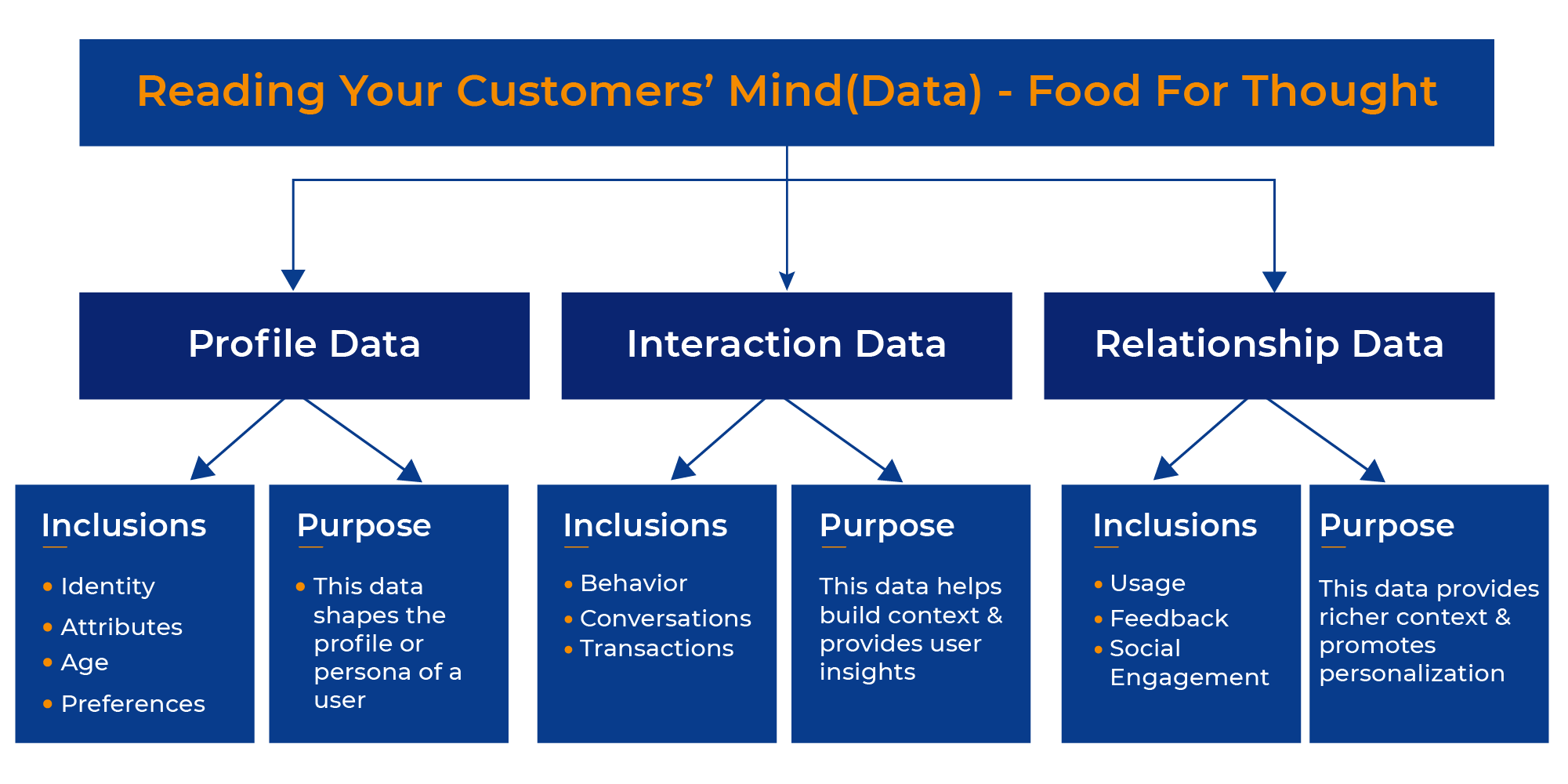
You enter a brick-and-mortar store. And, while you’re looking at options hoping to self-serve, out comes a salesperson asking you if you need any help — or worse, give you suggestions.

Fun fact: 40% of people now prefer self-service as opposed to human contact for interacting with a business.
Customers are more aware now than ever before of their needs and wants. And, they expect the same from support mavens – to understand their behavior and meet their expectations with minimal interactions. Since the interactions are often next to nil, it becomes imperative for organizations to be mindful of users’ search intent to understand and gauge what they really want. If you are new to the concept of search intent, then this blog post is for you. We’ll be covering everything from what it is, why it matters, to how you can optimize it to drive self-service success.
Demystifying Search Intent
This article by Forbes opined, “Customer intent is such a loaded phrase. Figuring out your prospects’ intentions or the purpose of their actions is like finding a flashlight in a mine. If you have it, you can quickly figure out what your next step should be. Without it you’ll keep stumbling along in the dark.”
Often used interchangeably with ‘user intent’, search intent describes the purpose or the primary goal of an online search. In order to use it to your firm’s advantage and drive self-service success, it’s crucial that you start thinking of search intent holistically — what exactly does the customer want? What is the agenda behind their search? And finally, how can you help them?

Once you have the search intent figured out, you can leverage those learnings to foster self-service within your organization. Here’s how:
1. Boost Customer Experience
Quoting Shep Hyken, “A self-service solution doesn’t mean you don’t offer customer service. On the contrary, self-service is a way to enhance customer service.”
Customers today prefer low-effort experiences, ones that they can complete on their own. Once you have a better understanding of your users’ search intent, you can proactively surface the information they are looking for. So, when users come looking for answers and your content captures their interest, they will be bound to stay, leading to an increase in customer satisfaction.
2. Shoot Up the Revenue
Convenience comes at the forefront of the self-service purchase process. Meeting and exceeding users’ expectations will not only facilitate your sales but also help raise an army of patrons. In fact, accurately identifying a user’s search intent could serve as the perfect opportunity to up-sell or cross-sell.
For instance, Amazon traces customers’ digital footprints to cross-sell effectively and display relevant products under ‘frequently bought together.’ For up-sells, it displays the ‘you might also be interested in’ section. The key here is to optimize content around a user’s search intent and suggest products and services that can enhance their existing purchase, thereby increasing the probability of repeat business, long-term loyalty, and ultimately boosting your revenue.
3. Reduce Support Costs
By utilizing a user’s search intent to a T, companies surface relevant content and products on top, thus ensuring that users find what they want at the first glance as opposed to contacting an agent asking for what they need. This cuts costs by foregoing the need to employ agents on a 24/7 basis. Add to that, when a user finds what s/he is looking for without any hassle, it improves case deflection, thereby reducing the operational costs.
Self-Service Channels Correlated with Intent-Based Results
There are multiple self-service channels where you can offer coherent solutions to your users round the clock. But amidst new content being constantly added and the old being archived on these channels, how can you ensure that relevant content stays put? Well, listed below are sure-fire ways to ameliorate relevant content on your self-service mediums using a dash of search intent:
1. Knowledge Base
A well-maintained knowledge base provides superior customer service by expediting information discovery. It serves as an avenue to resolve all your customer queries by retrieving helpful and resourceful information regarding a product, service, or topic when and where required. But what is the point of hoarding all this data if it doesn’t reach the right audience at the right time? This is where the need to evaluate a user’s intent steps in.
Once their search intent is deciphered, your customers are directed to articles that address their needs. Let’s say a user searches for eco-friendly water bottles. Now, if intent optimization is missing from the KB, then the results will also include plastic bottles. However, with the search intent figured out, the system will exclude plastic bottles from the search results altogether.
Fun Fact: 63% of consumers said they’d think more positively of a brand if it gave them content that was more valuable, interesting or relevant.
2. Customer Communities
Consumers are seemingly spoiled for choice, simply because they can access a treasure trove of content whenever they’re in doubt. That said, the first place they sprint to for answers is your support community. But, since information is a click away, users become impatient if the surfaced content doesn’t match their needs or resolve their queries. Fortunately, if you construe the users’ intent precisely you can put an end to your woes.
In order to offer an optimized experience on your online community, you can tune in results on the basis of auto-complete, synonym detection, user context, article popularity, article age, etc. Doing so will empower you to hit the bullseye by providing personalized and relevant results, thus elevating the overall CX. If the customer’s experience is personalized and intelligent, odds are, they will visit you again and quite possibly bring their friends along.
“If content is King, context is God!”
3. Conversational AI Solutions
Tackling the burgeoning caseload of tickets that are repetitive stirs up a hornet’s nest for agents. In fact, almost 40% of agents indicated that they spend at least a quarter of their work week doing mundane, repetitive, and manual tasks. While agents might feel overburdened, a virtual assistant certainly won’t. Intelligent chatbots have moved beyond completing rote tasks — after all, they are called ‘intelligent’ for a reason.
The always-on bots now leverage unsupervised learning and NLP to analyze the raw data and self-learn from it for further categorization. A virtual assistant like SearchUnify’s Chatbots recognizes patterns, understands the user intent, and then suggests contextual resolutions to agents. What’s not to love?
Servion predicted that by 2025, almost 95% of customer interactions will be powered by AI.
4. Learning Management Systems (LMS)
If you’re selling a complex product, the need to train employees and customers becomes all the more apparent.
Organizations need to stay abreast with the learning dynamics and decipher a way to fill the knowledge gaps. Firms are giving access to the relevant learning material to learners at the right time and the right place by transcending the limitations of a keyword-based search and making the results more contextual. Besides facilitating a dip in the number of customer support queries, these tutorials have the added advantage of delivering context-specific training content, thus maintaining its effectiveness.
For instance, if someone types, “How to exercise with barbells?” and you display content that shows people working out with dumbbells, then the whole purpose of creating a learning platform is defeated. On the other hand, once your LMS portal is equipped with intent recognition, all the irrelevant results will be eliminated.
Want to Leverage Customer Intent to Bolster Content Findability On Your Self-Service Channels?
User intent plays a crucial role in building the right KM strategy, self-service portals, and sales strategy. If you’re struggling to decipher a user’s intent correctly, you need the X-factor that will transcend you to stay ahead of your competition. This is where a enterprise agentic platform like SearchUnify can weave its magic. It empowers users to find resolutions quickly using a suite of next-gen, AI-powered applications.
That said, even when helpful content exists, finding it at the point of need remains a task. What you need is an effective and foolproof method to navigate your way through the labyrinth of data silos. Watch this insightful panel discussion where community and customer success experts spill the beans on ways to enhance CX, and heighten personalization in an effortless way. It also discusses key challenges and the best practices for improving content findability and ensuring self-service success.











